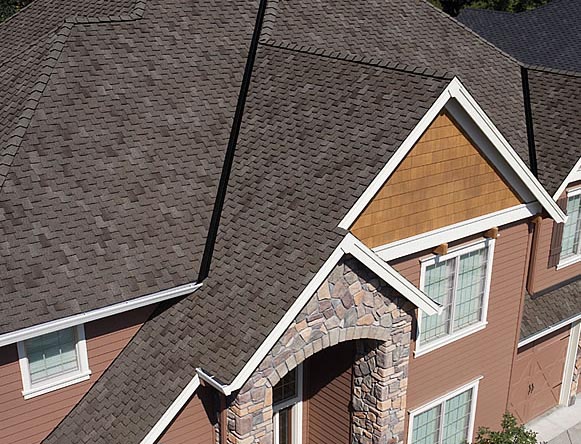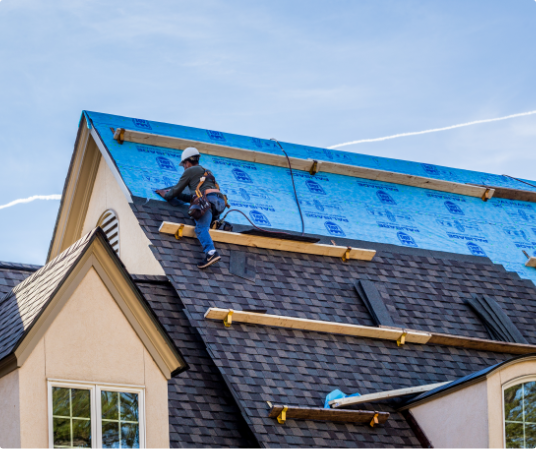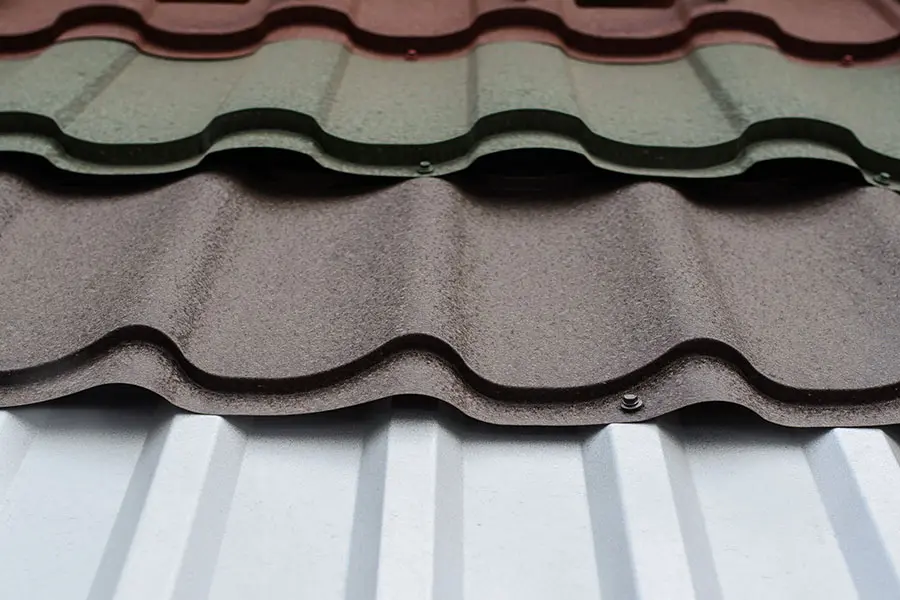Finest Practices for Ensuring Appropriate Roofing Air Flow
Making certain correct roofing air flow is essential for the long life and performance of a roof covering system. A well balanced consumption and exhaust vent ratio, frequently 1:300, plays an essential role, with consumption vents ideally put at the lower side of the roofing system for cool air access and exhaust vents at the height for warm air departure. Normal assessments to determine obstructions and keep clear air flow are vital. In addition, keeping insulation far from vents is important to protect against air flow restriction. Understanding these foundational elements sets the stage for more thorough understandings right into installment and maintenance techniques that can considerably boost your roof's performance.
Understand Air Flow Fundamentals
Appropriately comprehending air flow fundamentals is important for making sure the durability and performance of roof. Reliable ventilation mitigates dampness accumulation and temperature extremes in the attic room, both of which can cause substantial structural damages over time. A well-ventilated roof covering assists in stopping typical issues such as mold and mildew growth, timber rot, and ice dams, which can jeopardize the integrity of the roof products and the underlying structures.
The main objective of ventilation is to promote the movement of air, permitting a constant exchange between the outside and indoor environments. This equilibrium is accomplished via a mix of intake and exhaust vents that collaborate to keep optimum airflow. Consumption vents, commonly located along the soffits or eaves, allow fresh air to get in the attic room room, while exhaust vents, usually situated at or near the roof ridge, allow hot, moist air to get away.
Secret aspects influencing the performance of roof covering air flow consist of proper placement, ample sizing, and making sure that both intake and exhaust vents are unobstructed. Regular inspection and upkeep are critical to identify potential blockages, damage, or inefficiencies in the ventilation system, thereby securing the roofing system's performance and toughness.
Sorts Of Roofing Vents
Roof covering vents play a critical role in keeping effective attic room ventilation and, by expansion, the overall health and wellness of the roof. Different kinds of roofing system vents are offered, each with special benefits tailored to certain roof covering demands. Ridge vents, for example, are set up along the roofing's height, enabling warm, damp air to get away from the attic room. They supply continual ventilation and blend flawlessly with the roofline, making them both effective and cosmetically pleasing.

Soffit vents are mounted under the eaves and operate in tandem with roofing vents to guarantee a balanced intake and exhaust system. By enabling cooler air to enter from below, soffit vents facilitate the expulsion of hot air via upper vents. Gable vents, situated on the outside walls of the attic room, deal one more efficient option, specifically in homes with gable roof coverings.
Examine Your Current Air Flow

Next, consider the age and problem of your roof covering products and air flow elements. Older systems might not follow current structure codes or may have worn away over time, lowering their efficiency. Conduct a comprehensive assessment to determine any kind of signs of wear and tear, such as rust, damages, or voids that could jeopardize the system's performance.
In addition, determine the attic room temperature and humidity degrees. High temperature levels and humidity can indicate insufficient air flow.
Setup Best Practices
Effective installation of roof air flow systems is paramount for ensuring optimum performance and long life. Proper installation begins with recognizing the details ventilation needs of the roofing system and the building it covers. This includes computing the correct ratio of consumption to wear down vents, usually sticking to the 1:300 rule, which stipulates one square foot of ventilation for every single 300 square feet of attic room floor area.

The placement of vents is equally critical. Consumption vents should be mounted at the roof covering's lower side, usually in the soffits, to enable cool air to go into. Exhaust vents, on the various other hand, ought to be set up near or at the roof's peak to assist in the departure of warm, damp air. This develops an all-natural airflow that helps preserve temperature level and wetness balance within the attic space.
Seal all vent connections meticulously to avoid air leaks and possible water infiltration. Usage high-grade materials and adhere to producer standards to make sure toughness and performance. Additionally, integrating ridge vents with baffles can substantially boost air flow efficiency by stopping wind-driven rain he said and snow from going into the attic room.
Eventually, exact installment of roof ventilation systems reduces potential issues such as mold and mildew development, ice dams, and structural damages, making sure the roofing system's honesty and the building's overall health.
Routine Maintenance Tips
Consistency in maintenance techniques is essential to guaranteeing the long-term effectiveness of roofing ventilation systems. Normal evaluations are crucial, ideally done biannually-- in the spring and fall. During these inspections, make certain that vents are devoid of particles, nests, and various other obstructions that could impede air movement. Look for any signs of dampness build-up or mold and mildew, as these can suggest improper air flow or leakages (roofing companies gainesville florida).
Cleaning the vents is an additional necessary job. Make use of a soft brush or a vacuum to get rid of dust and debris from intake and exhaust vents. Beware not to damage the air vent screens or louvers throughout the process. Additionally, inspect the attic room room for any indications of water damages, which could jeopardize the integrity of the roof covering system.
Appropriate insulation is just as essential. Ensure that attic room insulation does not obstruct the vents, as this can seriously restrict air movement. If any kind of insulation has actually moved or settled, rearrange or replace it to maintain a reliable barrier.
Lastly, change any kind of damaged or missing out on parts quickly. Damaged vents, cracked roof shingles, or shabby blinking can all add to inadequate air flow and ought to be addressed without hold-up. Routine maintenance makes certain that the roof covering ventilation system functions efficiently, thereby extending the lifespan of the roofing system itself.
Final Thought
Making certain correct roof covering ventilation is paramount for maintaining the performance and resilience of a roofing system. Adherence to the 1:300 intake and exhaust air vent proportion, coupled with the strategic placement of vents, is important. Regular semiannual evaluations, particles cleansing, and ensuring insulation does not block air movement are important methods. Carrying out these ideal practices will foster a well-ventilated roofing system, consequently minimizing possible problems connected to moisture buildup and extreme warmth, ultimately Continue extending the roofing system's life expectancy.
A balanced intake and exhaust vent ratio, frequently 1:300, plays an essential duty, with consumption vents ideally placed at the reduced side of the roof for trendy air entry and exhaust vents at the optimal for warm air exit. Intake vents, commonly situated along the eaves or soffits, permit fresh air to enter the attic space, while exhaust vents, frequently located at or near the roof ridge, enable warm, moist air to escape.
Soffit vents are installed under the eaves and work in tandem with roof vents to make sure a balanced intake and exhaust system. By enabling cooler air to enter from below, soffit vents help with the expulsion of hot air with top vents. Adherence to the 1:300 consumption and exhaust air vent proportion, combined with the critical positioning of vents, is important.
 Romeo Miller Then & Now!
Romeo Miller Then & Now! Gia Lopez Then & Now!
Gia Lopez Then & Now! Danny Pintauro Then & Now!
Danny Pintauro Then & Now! Loni Anderson Then & Now!
Loni Anderson Then & Now! Rossy de Palma Then & Now!
Rossy de Palma Then & Now!